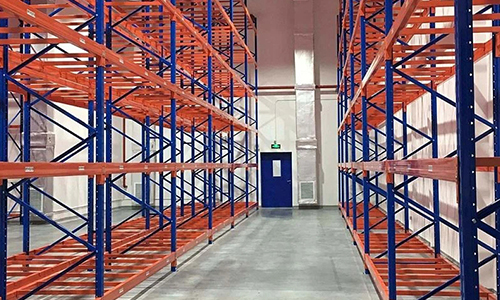Choosing the right shelf for your storage needs is crucial to ensure efficient organization and access to your items. To make an informed choice, consider the following steps:
Assess Your Storage Needs:
Begin by understanding the items you need to store. Consider the size, weight, and quantity of the items, as well as their specific storage requirements (e.g., temperature, humidity, cleanliness).
Determine Available Space:
Measure the available space where you plan to install the shelves, including the dimensions, height, and layout. Take into account any obstacles or structural elements.
Type of Goods:
Consider the characteristics of the items you'll be storing, such as whether they are small parts, heavy equipment, fragile items, or bulk goods. The type of goods will influence the choice of shelving.
Accessibility Needs:
Think about how often you need to access the items. High-frequency access may require easily accessible shelves, while infrequently accessed items can be stored in less accessible areas.
Load Capacity:
Determine the load capacity required for the shelving. Consider the weight of the items you'll be storing and ensure the shelving can support the intended load.
Shelving Material:
Select the appropriate material for the shelving based on your needs. Common materials include steel, stainless steel, aluminum, wood, plastic, and wire. Consider factors like durability, corrosion resistance, and hygiene.
Shelving Type:
Choose the right shelving type for your needs. Options include bolted shelving, rivet shelving, pallet racking, cantilever racking, and more. Each type has specific advantages and limitations.

Adjustability:
Consider whether you need adjustable shelving. Adjustable shelves allow for flexibility as your storage needs change over time.
Safety Features:
Evaluate the safety features of the shelving, including anti-tip mechanisms, backstops, and guardrails. Safety features are especially important for heavy or tall shelving.
Durability and Longevity:
Choose shelving that is durable and built to last. High-quality materials and construction can ensure a longer lifespan.
Budget:
Set a budget for your shelving needs. Balance cost considerations with the quality and durability of the shelving to make a cost-effective choice.
Installation and Maintenance:
Consider the ease of installation and future maintenance. Some shelving types require professional installation, while others can be easily assembled.
Compliance and Regulations:
Ensure that the chosen shelving complies with relevant safety and building codes, as well as industry-specific regulations.
Space Optimization:
Aim to maximize space utilization without overcrowding. The layout should allow for organized storage while facilitating easy access.
Aesthetics and Organization:
Consider the aesthetic appeal of the shelving, especially if it will be used in retail or customer-facing environments. Organize items neatly for efficiency.
Consult with Experts:
If you have complex or unique storage needs, consider consulting with storage experts or manufacturers who can provide customized shelving solutions.
Testing and Evaluation:
If possible, test the shelving solution with a small quantity of items before fully implementing it to ensure it meets your needs.
Customer Reviews and Recommendations:
Read customer reviews and seek recommendations from others who have similar storage needs to gather insights into the performance and suitability of different shelving options.
By carefully assessing your specific storage needs and considering the factors mentioned above, you can choose the shelf or shelving system that best matches your requirements, optimizing organization, accessibility, and space utilization. The above is the analysis of storage shelf manufacturers, if you have any questions and needs, you can contact us! We will provide you with satisfactory warehouse and storage solutions.